Mesh reconstruction module: deep net
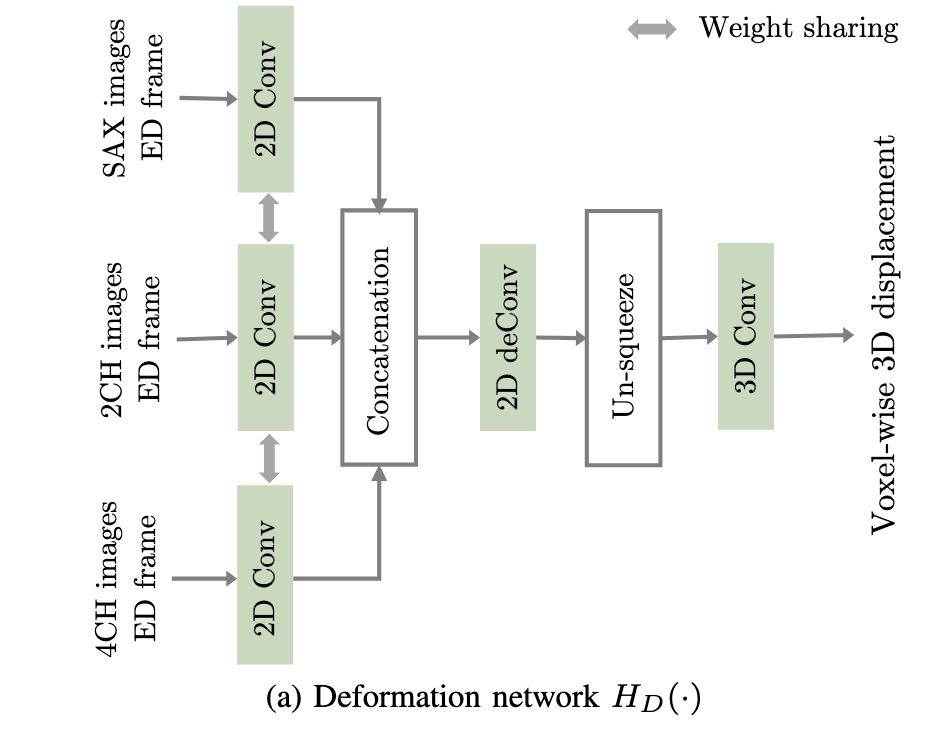
Mesh reconstruction module: loss function
- Regularization (Huber) loss on deformation
- Smooth loss: regularize adjacent vertices
- Surface loss: between reconstructed mesh
- Shape loss: weighted Hausdorff distance, see later.
Motion tracking module
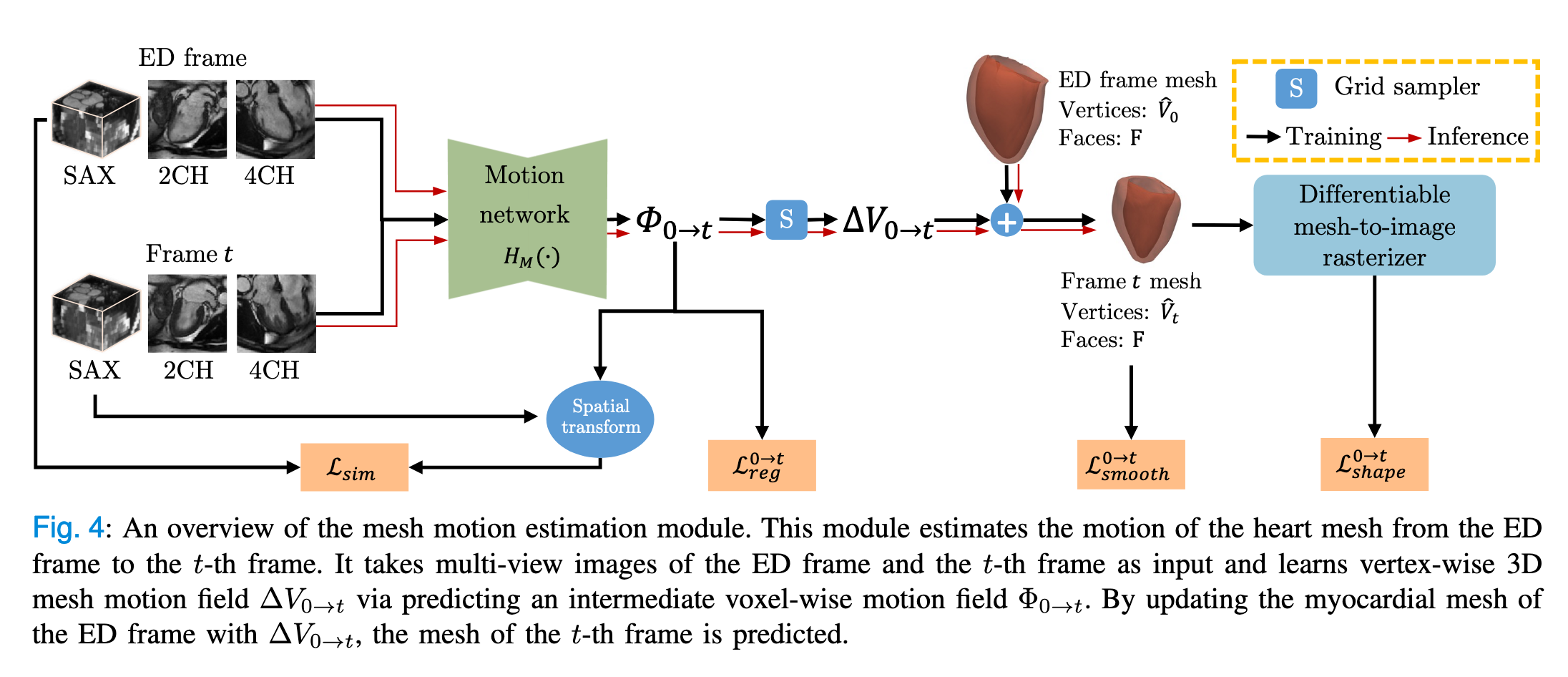
- Input: Multi-frame SAX and LAX (2CH+4CH) CMR
- Estimate a deformation
- Bi-linear Grid Sampling:
- Output:
- apply to template on each vertex:
- F (facets) remain unchanged
- apply to template on each vertex:
Motion tracking module: deep net
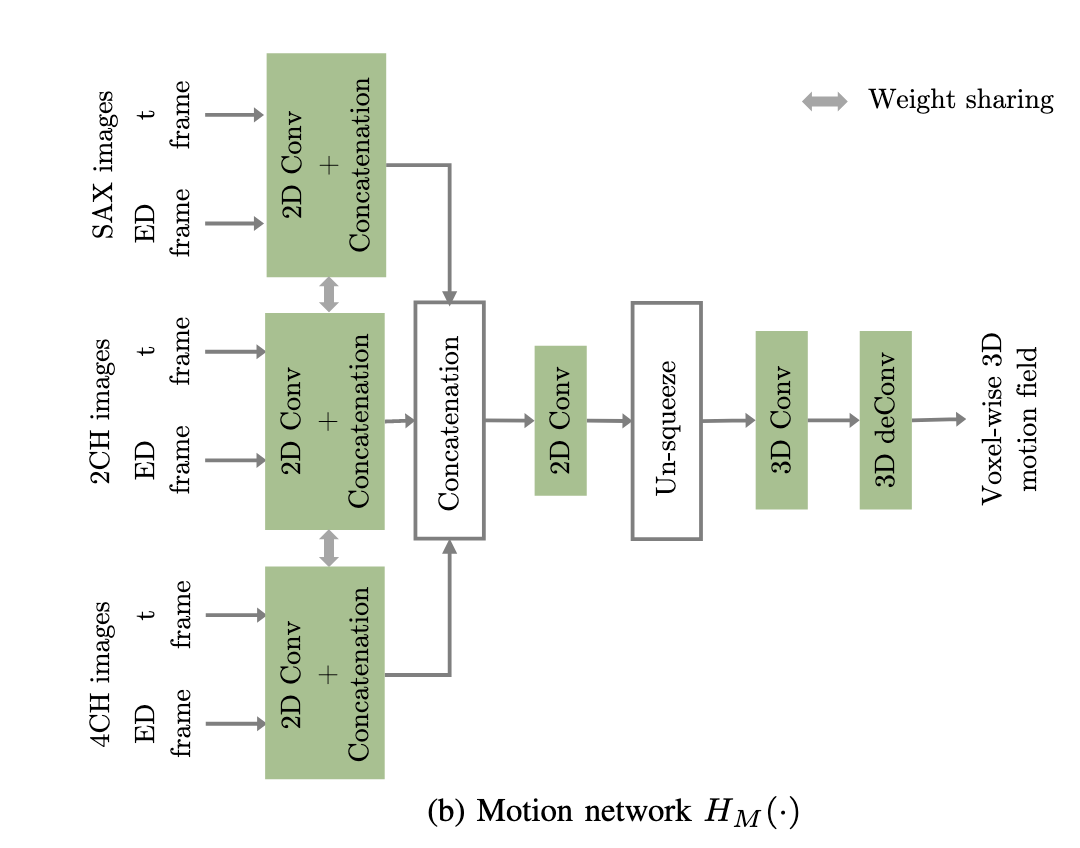
Motion tracking module: loss function
- Regularization (Huber) loss on deformation
- Smooth loss: regularize adjacent vertices
- Simliarirty loss: inverse transform.
- Shape loss: weighted Hausdorff distance, see later.
Differentiable Mesh-to-image rasterizer
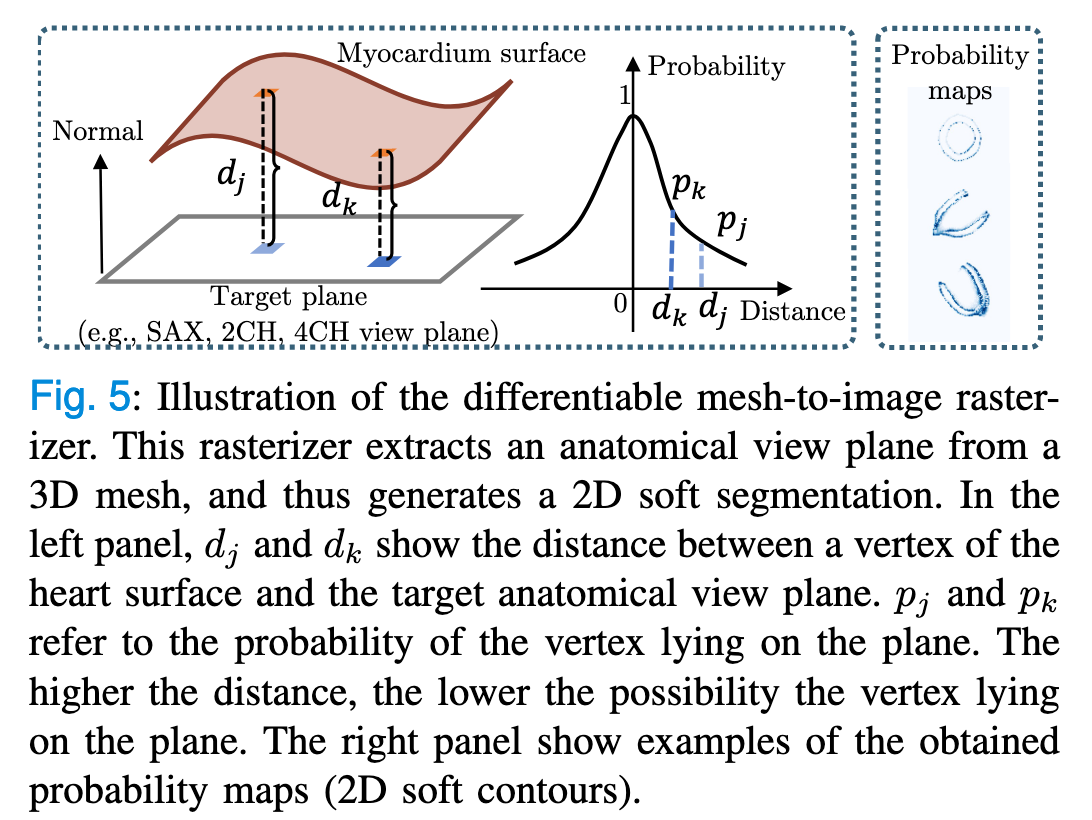
Experiments: Mesh to plane
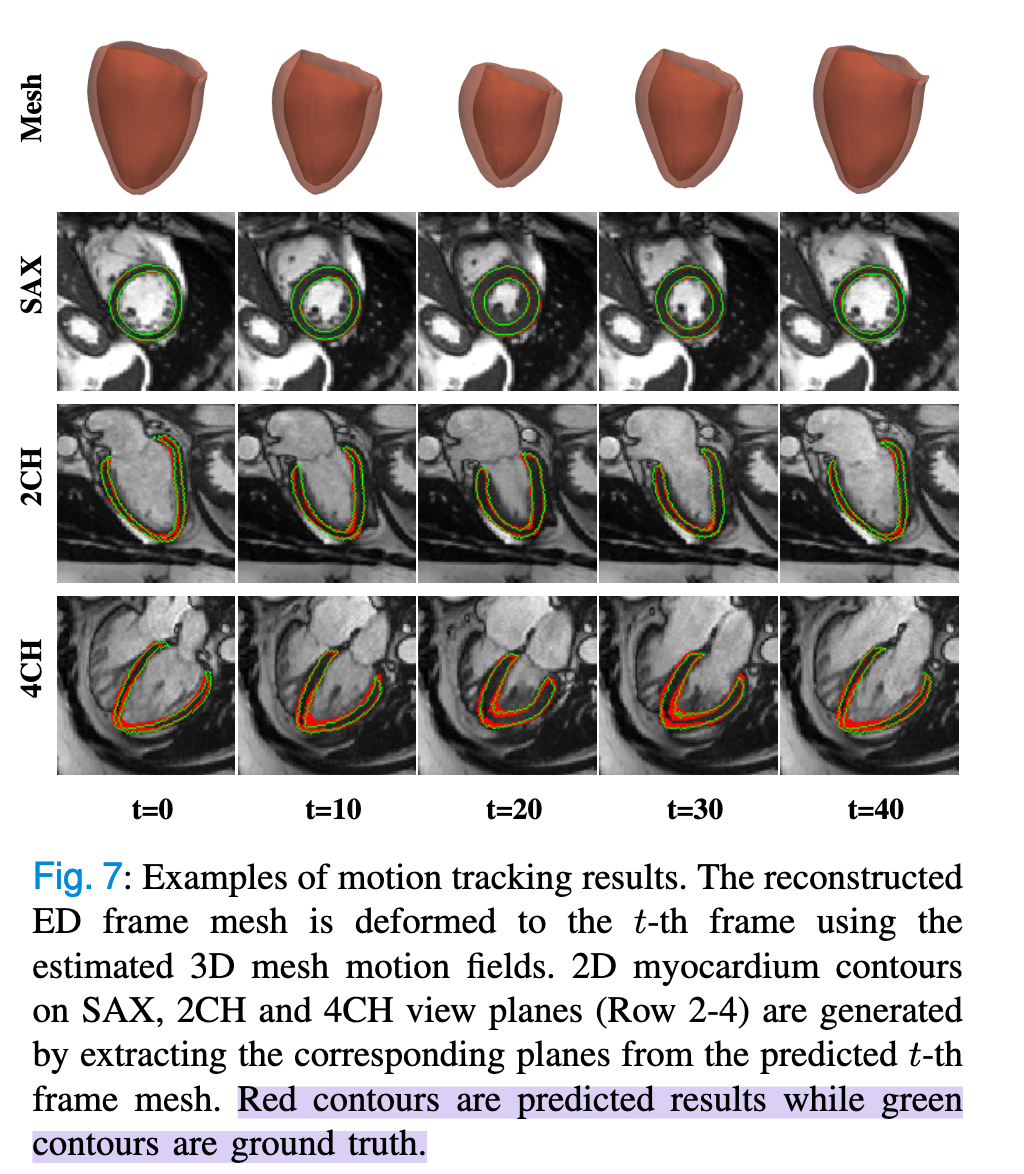
Experiments: Motion Tracking
Quantitatively evaluated the performance on the ES frame (have gt).


Experiments: Motion Tracking across cardiac cycle
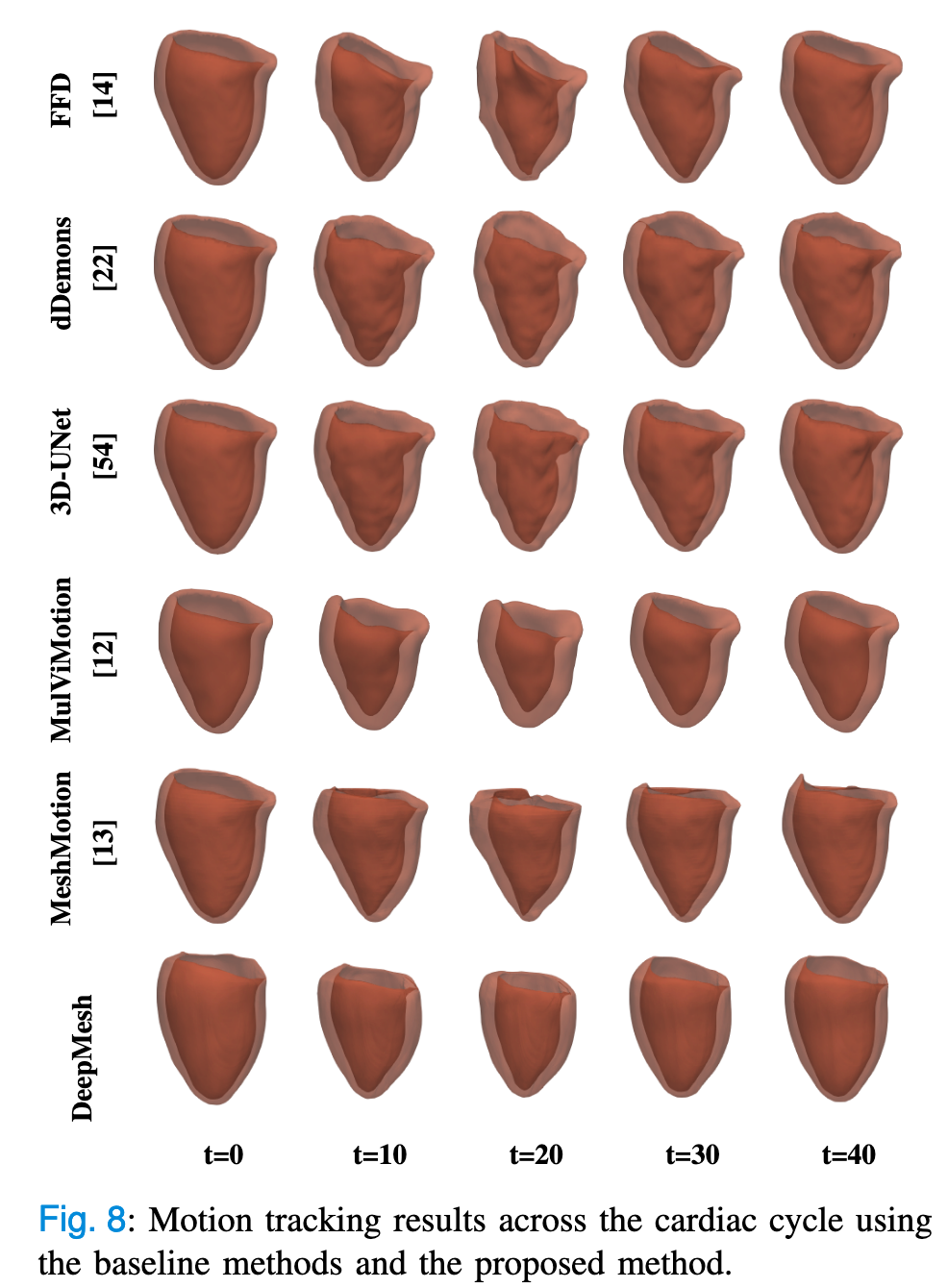
Ablation Study: Mesh reconstruction
Compared with ground truth 2D myocardium contours.
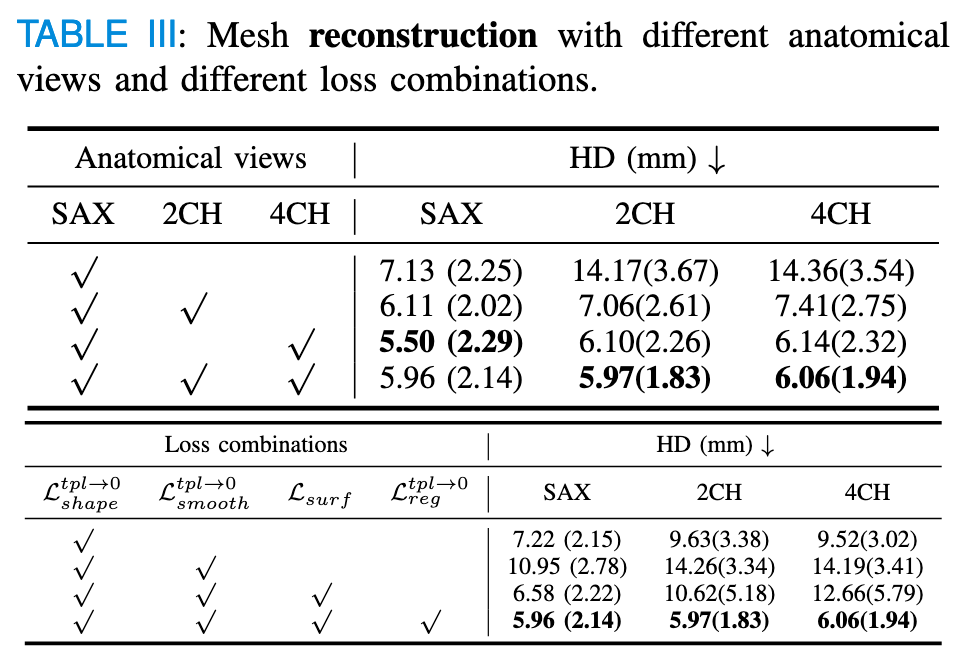
Multi-view CMR helps a lot.
Ablation Study: Motion Tracking
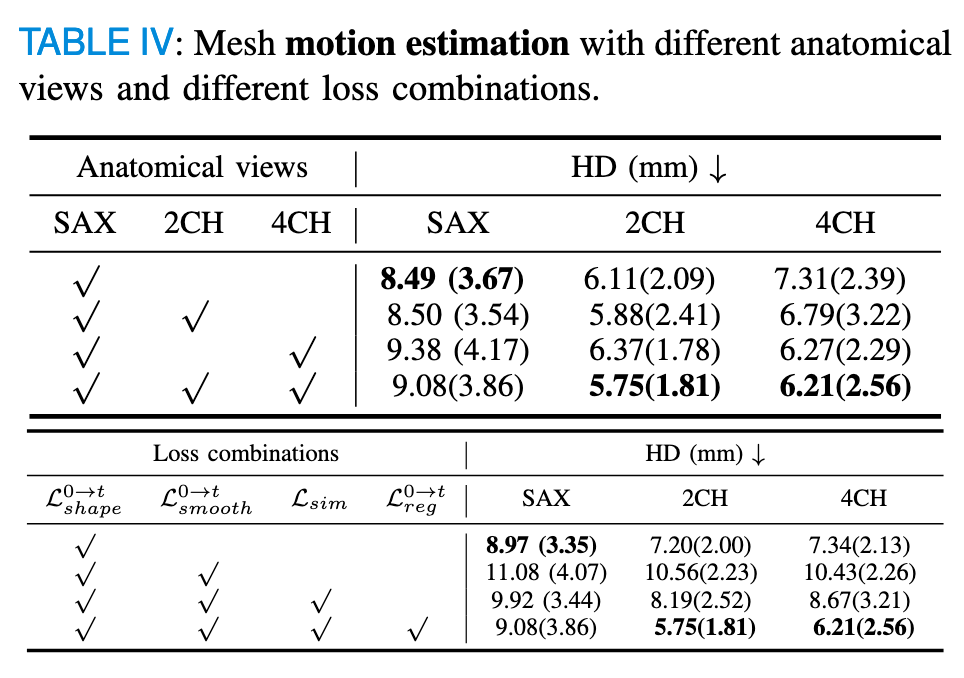
Experiments: Loss Ablation viz
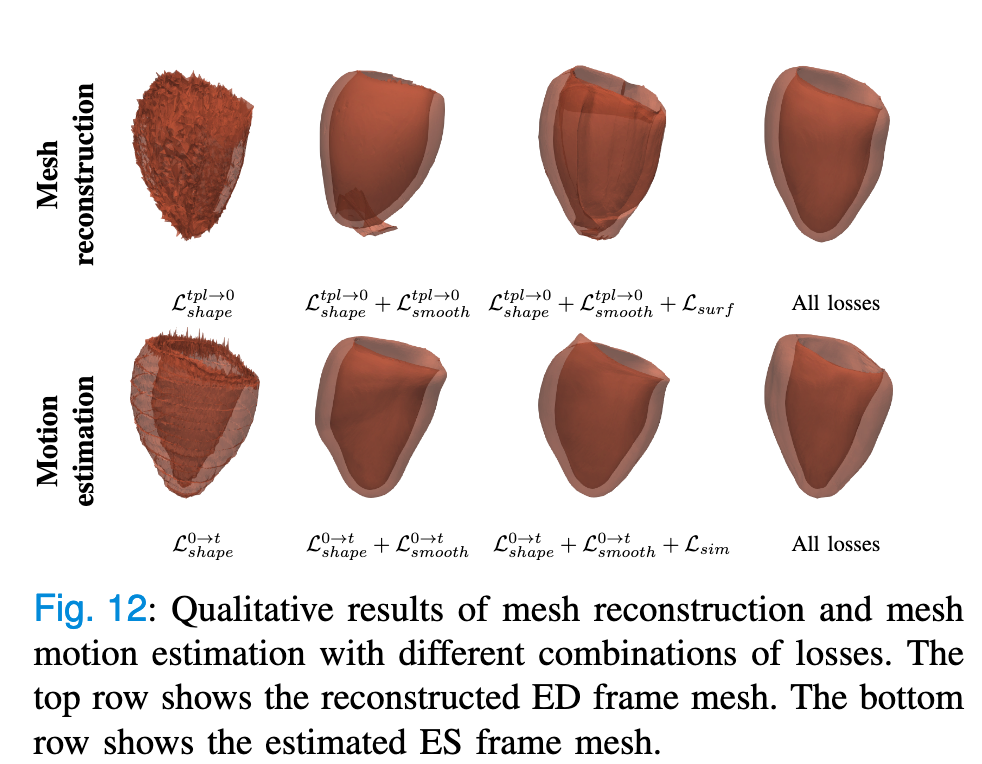
THANKS